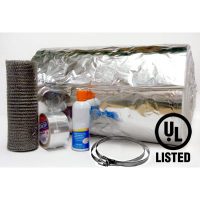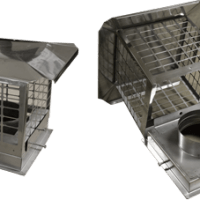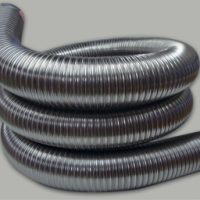There are many people that ask about an Outside Air Kit, usually referred to as an OAK, including what does it do for you, why use one, and what are it’s advantages and disadvantages.
Any combustion appliance requires a combustion air supply. The Outside Air Kit (OAK) enables a stove to pull air from outside of the house rather than from the room the stove is sitting in.
Unless you have a draft problem (difficult starts and back-puffing), an OAK probably will be of no value to you. Some argue that OAKs increase overall heating efficiency because the stove is no longer pulling cold outside air indirectly though the entire house but instead is pulling directly from the outside. However others would argue that home ventilation is actually very important, especially in modern tight houses, and that the effects of an appliance slowly replacing indoor air is actually quite beneficial. Also OAKs are generally uninsulated and often have potential gaps at the connection point to the stove – both of which can create a new source of heat loss in your home and possible cold drafts when the stove is not in use.
It is argued that an OAK prevents competition over combustion air between other fuel burning appliances in your house (furnaces, h/w heaters, gas dryers, etc.). They can also prevent problems when someone turns on an exhaust fan. If you have a nice tight house, an OAK could improve your stove’s operation. If you have draft problems that are helped by opening a window, you may benefit from an OAK. People with older “leaky” houses don’t usually have draft related problems, but some report that the house feels warmer because they aren’t having as much cold air infiltrating to replace what the stove uses.
Some have argued that OAK’s pose certain hazards, such as flue reversals, under certain conditions (specifically when wind is blowing against the side of the house OPPOSITE the outside air connection creating a negative pressure zone at the air intake which could potentially cause a flue reversal). These issues are described on woodheat.org.
The OAK also requires occasional maintenance to keep it obstruction free. You also need to be careful to locate the OAK where it cannot get buried under snowfall, leaves, etc but also properly separated from the stove exhaust (or other exhaust) as reusing exhaust air would lower your efficiency.
As to how they connect, different models do it different ways, some go right into the combustion chamber, which keeps the pipe from leaking cold air in when the stove isn’t running, but means you are more vulnerable to clogs in the OAK pipe. Others just bring the air close to the regular intake, which makes the operation a bit less reliable, but allows you to still burn room air if the pipe gets clogged, however the pipe may allow more cold air to infiltrate the room when the stove isn’t running. It’s pretty much a question of how the stove maker feels like doing it.
In general, an OAK should be viewed as a solution to problems that have no other remedy. New stove installations should be designed to ensure the best possible draft without the use of an OAK. If you have a tight (probably tyvek wrapped), air-sealed house, you may need and benefit from using an OAK.
Finally it should be pointed out that an OAK is required by code in Mobile Home installs, and some or all other installs depending on your jurisdiction – check your local code.






